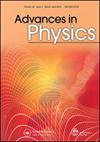Non-Hermitian物理
IF 13.8
1区 物理与天体物理
Q1 PHYSICS, CONDENSED MATTER
引用次数: 740
摘要
综述了非埃尔米特经典物理学和量子物理学的基础和应用。首先,以教学和数学连贯的方式描述了非埃尔米特线性代数中的关键定理和中心概念,包括Jordan范式、双正交性、例外点、伪埃尔米特性和奇偶时间对称性。在此基础上,我们概述了从光子学、力学、电路、声学到活性物质等各种经典系统如何用于模拟非埃尔米特波物理。特别是,我们讨论了其中发现的丰富而独特的现象,如单向不可见性、增强的灵敏度、拓扑能量转移、相干完全吸收、单模激光和稳健的生物传输。然后,我们在Feshbach投影方法和量子轨迹方法的基础上,详细解释了非埃尔米特算子如何成为开放量子系统的有效描述。我们讨论了它们在与各个领域相关的物理系统中的应用,包括原子、分子和光学物理学、介观物理学和核物理学,重点讨论了量子系统中的突出现象和主题,如量子共振、超辐射、连续量子齐诺效应、量子临界现象、量子色动力学中的狄拉克光谱,和非卫生共形场论。最后,我们在非埃尔米特系统的复谱中引入了带拓扑的概念,并通过提供本文首次完整给出的证明以及一些有指导意义的例子,给出了它们的分类。还回顾了与非埃尔米特物理学有关的其他主题,包括非互易输运、速度限制、非卫生量子行走。本文章由计算机程序翻译,如有差异,请以英文原文为准。
Non-Hermitian physics
A review is given on the foundations and applications of non-Hermitian classical and quantum physics. First, key theorems and central concepts in non-Hermitian linear algebra, including Jordan normal form, biorthogonality, exceptional points, pseudo-Hermiticity, and parity-time symmetry, are delineated in a pedagogical and mathematically coherent manner. Building on these, we provide an overview of how diverse classical systems, ranging from photonics, mechanics, electrical circuits, and acoustics to active matter, can be used to simulate non-Hermitian wave physics. In particular, we discuss rich and unique phenomena found therein, such as unidirectional invisibility, enhanced sensitivity, topological energy transfer, coherent perfect absorption, single-mode lasing, and robust biological transport. We then explain in detail how non-Hermitian operators emerge as an effective description of open quantum systems on the basis of the Feshbach projection approach and the quantum trajectory approach. We discuss their applications to physical systems relevant to a variety of fields, including atomic, molecular and optical physics, mesoscopic physics, and nuclear physics with emphasis on prominent phenomena and subjects in quantum regimes, such as quantum resonances, superradiance, the continuous quantum Zeno effect, quantum critical phenomena, Dirac spectra in quantum chromodynamics, and nonunitary conformal field theories. Finally, we introduce the notion of band topology in complex spectra of non-Hermitian systems and present their classifications by providing the proof, first given by this review in a complete manner, as well as a number of instructive examples. Other topics related to non-Hermitian physics, including nonreciprocal transport, speed limits, nonunitary quantum walk, are also reviewed.
求助全文
通过发布文献求助,成功后即可免费获取论文全文。
去求助
来源期刊

Advances in Physics
物理-物理:凝聚态物理
CiteScore
67.60
自引率
0.00%
发文量
1
期刊介绍:
Advances in Physics publishes authoritative critical reviews by experts on topics of interest and importance to condensed matter physicists. It is intended for motivated readers with a basic knowledge of the journal’s field and aims to draw out the salient points of a reviewed subject from the perspective of the author. The journal''s scope includes condensed matter physics and statistical mechanics: broadly defined to include the overlap with quantum information, cold atoms, soft matter physics and biophysics. Readership: Physicists, materials scientists and physical chemists in universities, industry and research institutes.
 求助内容:
求助内容: 应助结果提醒方式:
应助结果提醒方式:


